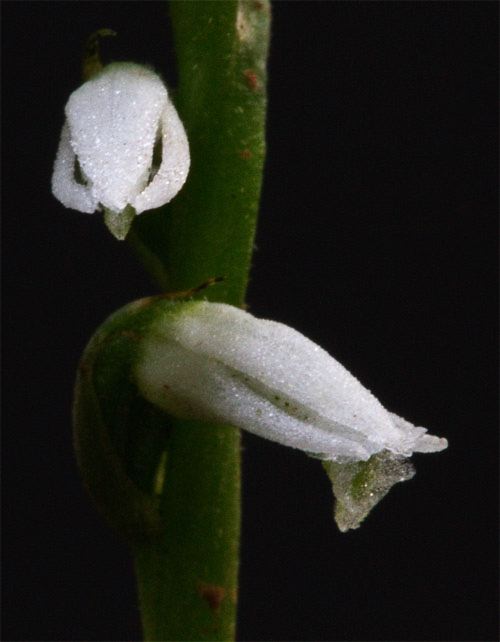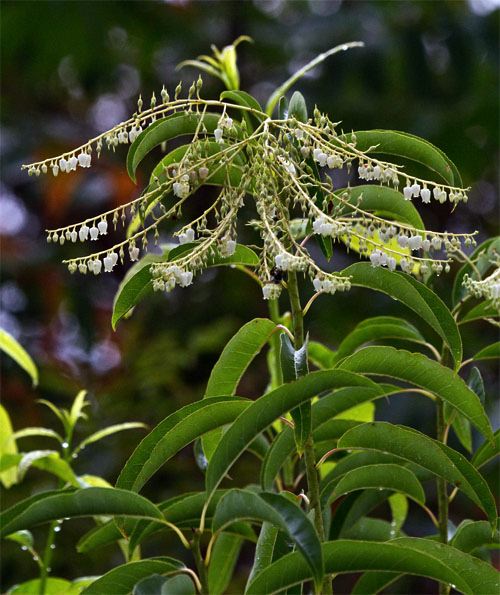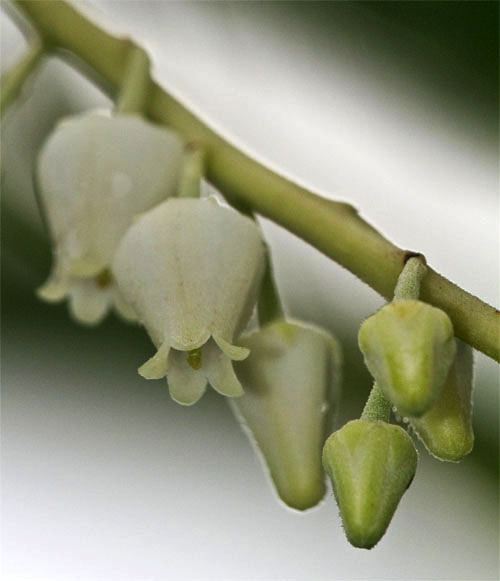|
|
|||
|
(Back to Preceding Week; on to Next Week) |
|
|
|
Join fellow birders & educators as citizen scientists on 2011 Operation RubyThroat expeditions to observe, capture & band hummingbirds in Belize, Guatemala & Costa Rica. No experience necessary! Alumni of selected Holbrook trips receive a $150 discount. (Click on logo below for more info.)
ANNOUNCING TWO SCHOLARSHIPS As a benefit of supporting Hilton Pond Center for Piedmont Natural History, everyone who becomes a 2010 member now through 26 October at the $50 level or higher will be entered in a drawing for one of TWO Operation RubyThroat scholarships for our upcoming midwinter hummingbird expedition to Costa Rica (26 Jan-6 Feb 2011). Scholarships are $1,799 each and cover all land costs (food, lodging, in-country travel, and instructional activities). Scholarship recipients are responsible for air travel to and from Costa Rica (Liberia), airport departure tax, gratuities, personal amenities, and any taxes resulting from the award. Recipients will be announced on 27 Oct 2010. (If someone already enrolled in the Costa Rica 2011 expedition receives a scholarship, a refund will be issued.) Scholarships are made possible by a generous gift from an anonymous Operation RubyThroat expedition alumnus and in cooperation with Holbrook Travel. Membership donations of $50--or more!--may be made via Paypal by clicking the logo below or by sending a check to: Hummingbird Scholarship, c/o Hilton Pond Center, 1432 DeVinney Road, York SC 29745. (Scholarship-eligible memberships must arrive at the Center by by 11:59 p.m. EDT on 26 Oct and should indicate clearly you wish to be considered for a scholarship.) Membership fees and all donations to the Hilton Pond Center, a 501(c)(3) non-profit organization, are tax-deductible as allowed by law and are non-refundable. For details or if you have questions, see the link above or contact Debbie Sturdivant at Holbrook Travel toll-free at (866) 748-6146 or via e-mail
|
|
FRONT YARD PHENOMENA We're always intrigued by photo and travel magazines that heap high praise on exotic destinations. Sure, we like to wander from the Carolina Piedmont upon occasion--sometimes as far away as Costa Rica and Belize--but we always delight upon returning to Hilton Pond Center and the opportunity to explore our trails and tributaries. Often we don't even have to go too far, knowing that walking out the front door and exploring the tiny yard around the Center's old farmhouse will reveal plenty of natural phenomena. Such was the case this week, as we illustrate and describe below.
All text & photos © Hilton Pond Center Warm, humid weather--and there's been plenty of THAT this summer at Hilton Pond Center--is almost guaranteed to stimulate a few fungi to poke through the soil surface with their reproductive structures. The trio of buttons above is from Caesar's Amanita, Amanita caesarea, although some mycologists--i.e., mushroom specialists--prefer the name AMERICAN Caesar's Amanita, A. hemibapha or A. jacksonii. (Mycologists always seem to be arguing about nomenclature, but that's probably because so many fungi are downright deceptive.) As the shiny red cap of the Amanita unfolds, millions of spores are released, guaranteeing future generations of this colorful mushroom.
All text & photos © Hilton Pond Center At the edge of the front yard at Hilton Pond Center, an old Southern Red Oak that died years ago, fell partway over, and now looms over one of our trails like the sword of Damocles. Growing from the side of the decaying trunk this week was another mushroom, this one paler and much slimier than the Amanita in the grass. Making the fungus even more slimy was a pair of slugs, whose mucous trails coated the mushroom cap and the dead wood from which the fungus took sustenance. The slugs were exploring this unidentified mushroom, checking it out with their eye-tipped tentacles and apparently munching on it with their raspy mouthparts.
All text & photos © Hilton Pond Center As we photographed the front yard fungi we heard some buzzing nearby and picked up rapid movement in our peripheral vision. At first we thought it was a hummingbird investigating Trumpet Creeper blossoms that festooned the fallen oak, but instead it was a rather large, 1.5-inch-long Robber Fly we chased with our camera and macro lens until it eventually came to rest on a pole holding up our feeders and hummer traps. The Robber Fly Family (Asilidae) is filled with predators other insects would just as soon avoid, in that Robber Flies use their aerial speed to chase down prey they then grasp with their strong legs--just before stabbing the hapless bug or beetle with a short proboscis that injects saliva laden with neurotoxins and digestive enzymes. After the prey item's insides turn to porridge, the Robber Fly sucks up the succulent juices and goes off to find another meal. Yummy! Although we don't know the species of the Robber Fly above, we know she is a female--as revealed by her long, sword-shaped ovipositor.
All text & photos © Hilton Pond Center The next buzzing noise we heard really WAS a hummingbird, one so intent on feeding it ignored us while we photographed the Robber Fly just below a feeder-baited trap the bird was investigating. The hummer entered the trapdoor and forgot how to get out, so it was a simple matter for us to reach in, extricate it, and take it back to our banding table inside the old farmhouse. We were happy to see this hummingbird--and the others that finally have been swelling the ranks during the past few weeks. As noted by his heavy throat streaking and developing red gorget, this particular individual was an immature male--probably one that hatched locally and is simply waiting until an appropriate time to start winging his way south toward the Neotropics. After measuring and banding the hummer we offered him a little sugar water that he readily drank, and then he was off to the races.
All text & photos © Hilton Pond Center To be honest, we don't actually have any Cypress Vine, Ipomoea quamoclit, growing at Hilton Pond Center--we photographed the half-inch flower above last weekend in Greenville in the yard of our beloved mother-in-law Norma Dressler Ballard on the occasion of her 85th birthday--but if it did grow here we're certain hummingbirds would be all over it. One plant that IS native to the Carolina Piedmont--but that never ceases to surprise and delight us when we find it--sprouted a few weeks ago in the front yard in a practically bare piece of ground surrounded by crabgrass. Eagle-eyed Ernesto Carmen Jr., our Neotropical bird guide and colleague visiting from Costa Rica earlier in the month, pointed out a couple of smooth green stalks (right) that we recognized immediately as one of the wild terrestrial orchids (Orchidaceae). We staked the two emerging stalks and flagged them as protection from trampling and sat back to watch them grow--so slowly that Ernesto never got to see them flower before jetting back to San Jose.
All text & photos © Hilton Pond Center We suspected all along they were one of the Spiranthes spp.--probably the southerly S. gracilis, Slender Ladies'-tresses, but without the flowers we couldn't be sure. Today, 26 August, the tiny quarter-inch blossoms finally started to open (above), indicating our initial identification is probably correct. What's amazing is the tallest of these two front yard specimens has shot up to a height of 18"--twice as tall as any we'd seen in the wild. So there you have it, a selection of plants, fungi, and critters that showed up in Hilton Pond Center's front yard--and Norma's--during August 2010. To paraphrase those ubiquitous and somewhat amusing Capital One credit card commercials, "What's in YOUR front yard?" All text & photos © Hilton Pond Center
All text & photos © Hilton Pond Center It wasn't in our front yard at Hilton Pond Center, but when we were in West Virginia last week we saw lots of Sourwood, Oxydendrum arboreum, still blooming in mid-August on mountain roadsides. When we wondered out loud whether blossoms of this prolific understory tree might be as attractive to Ruby-throated Hummingbirds as they are to Honey Bees, Ernesto Carman Jr. staked out a flower cluster and reported a few RTHU did come to visit. He was fairly confident the hummers were taking nectar from the Sourwood and not just gleaning tiny insects.
We're ever on the lookout for plants used by ruby-throats--so much so that a new emphasis of our Neotropical hummingbird expeditions is learning what local plants are visited by our study species on their wintering ground. But we also want to know more about plants--especially native ones--that provide nectar for Ruby-throated Hummingbirds up here within the breeding range, especially if these flowers might be pollinated by hummers. If you have observed RTHU feeding on Sourwood blossoms, please drop us a note at INFO, including where and when you made the observation(s).
All text & photos © Hilton Pond Center
|

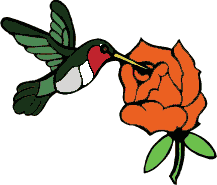 "HUMMINGBIRD MORNINGS"
"HUMMINGBIRD MORNINGS"
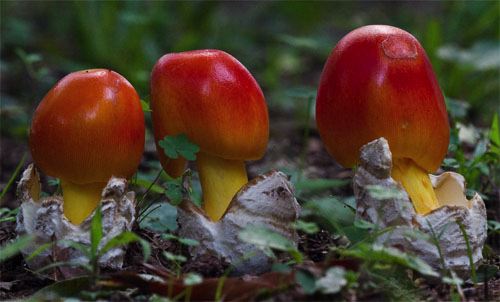
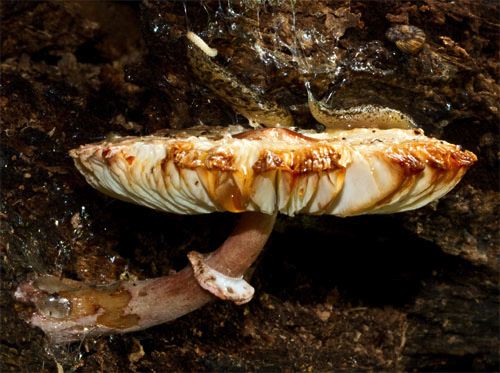
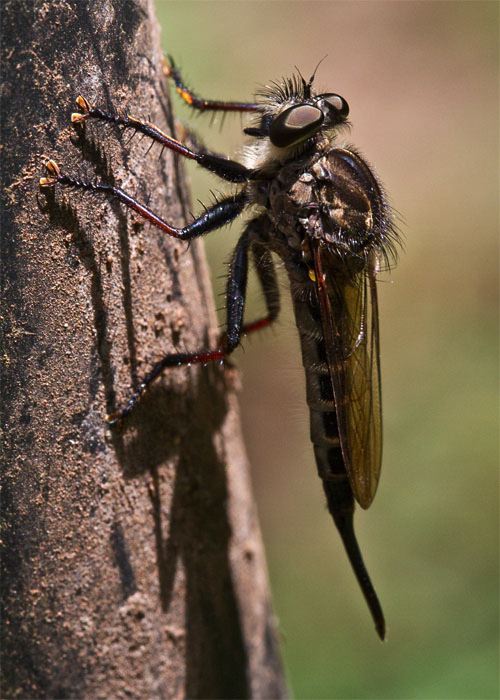
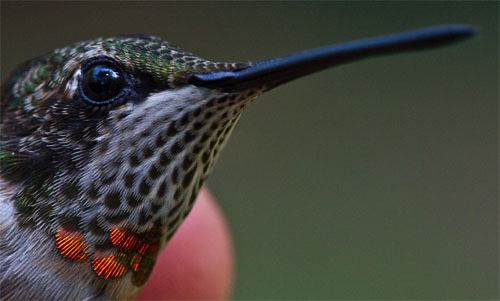
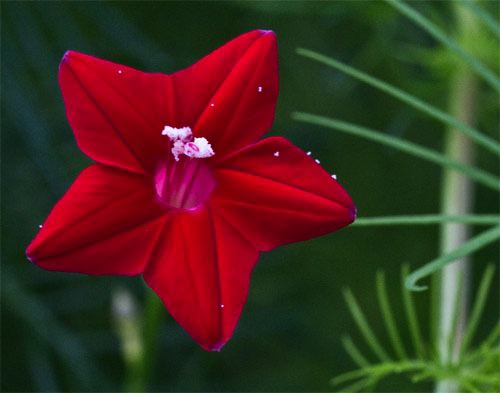
 Cypress Vine is actually a Morning Glory in the Solanales and is native to tropical America. The brilliant red blossom and fern-like foliage make this annual plant a delight to the eye, and even though it's not native it seldom becomes invasive in the Carolina Piedmont and northward--where it typically dies back at first frost. Cypress Vine does re-seed readily, however, so one should keep an eye on it, restricting to growing on a wire fence or trellis.
Cypress Vine is actually a Morning Glory in the Solanales and is native to tropical America. The brilliant red blossom and fern-like foliage make this annual plant a delight to the eye, and even though it's not native it seldom becomes invasive in the Carolina Piedmont and northward--where it typically dies back at first frost. Cypress Vine does re-seed readily, however, so one should keep an eye on it, restricting to growing on a wire fence or trellis.